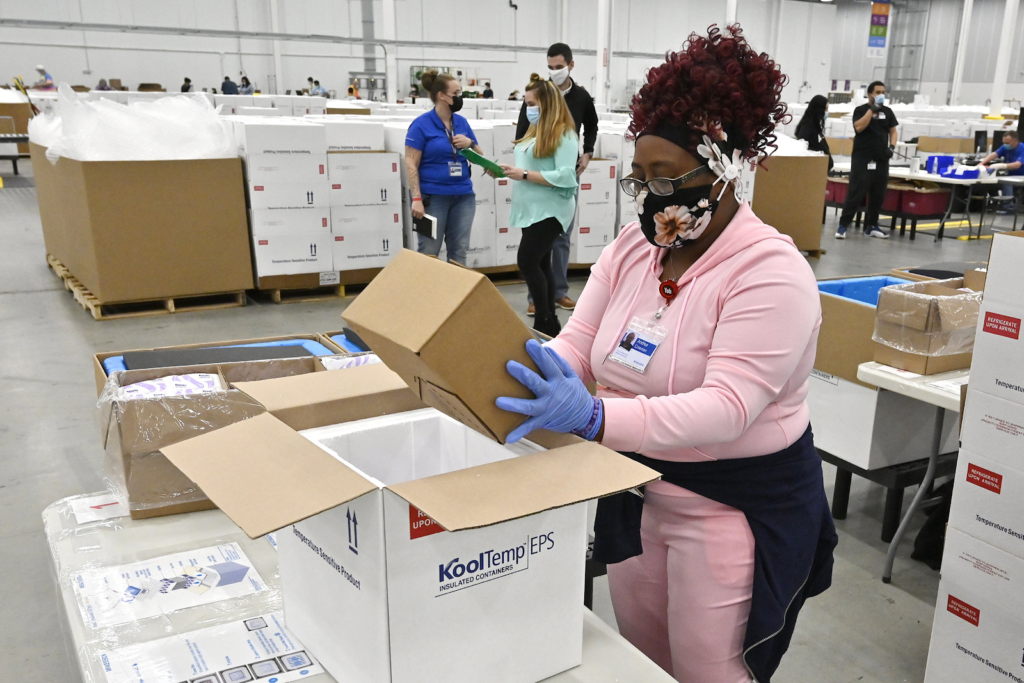By Erin Maxwell || News Editor

On Saturday, February 27th, the Federal Food, and Drug Administration officially approved Johnson & Johnson’s COVID-19 vaccine for immediate emergency use, with promises to deliver as early as Tuesday morning.
The decline in coronavirus case rates in the past couple of weeks following alarming winter peaks has subsided, with a 2% increase in reported cases reminding the current administration of the imminent danger to public health. As public health officials warn legislators not to roll back restrictions, the looming threat of incoming variants makes this vaccine a welcome development in mitigation efforts. The CDC has predicted that the U.K. variant, a highly contagious strain named B.1.1.7, will become the dominant version of the virus this month, making the rollout of vaccinations even more important.
About 15.3% of the U.S. population has received one dose of either one of the previously approved Moderna and Pfizer/BioNTech vaccines, with only 7.7% being fully vaccinated. As the White House reports a seven-day vaccination average of 1.7 million shots a day, it is clear that efforts to improve infrastructure and get ahold of more doses are falling short of many expectations. “Please hear me clearly,” Dr. Rochelle Walensky, the director of the United States’ Centers for Disease Control and Prevention implored, “at this level of cases with variants spreading, we stand to completely lose the hard-earned ground we have gained” (CNN). On March 2, the White House announced the use of the Defense Production Act to utilize pharmaceutical giant Merck to produce massive quantities of this new immunization.
Still, many are quick to point out differences between the previous two vaccine iterations and the new Johnson & Johnson version. As misinformation and doubt spiral, here are the facts:
- You only need one shot.
Unlike the Moderna and Pfizer/BioNTech vaccines, the Johnson & Johnson immunization only requires one injection. A booster shot, currently in development, maybe needed much later down the line, like its other two counterparts who are also developing booster shots, especially to combat new variants. Still, this one-shot wonder encourages a much faster rollout, and may be able to reach communities and individuals who may have difficulties scheduling or attending a two-pronged treatment, and will make delivery less logistically complicated. Additionally, many recipients may simply prefer to only have one injection, which can be delivered with this brand.
- Efficacy rates can be misleading.
Much of the initial backlash against the J&J vaccine stemmed from reports that the vaccine has an average 72% efficacy rating, in comparison to Modern and Pfizer’s 95% efficacy rating. However, health experts continue to emphasize that the vaccine is 85% effective against severe disease, and 100% effective against death. Additionally, this brand was tested among new variants and in South Africa, unlike the previous two iterations, perhaps skewing efficacy statistics. Although heavily circulated numbers suggest the superiority of the double-dose vaccinations, Dr. Cody Meissner, infectious disease expert at Tufts School of Medicine echoes the sentiment of the larger public health community, saying “all of the vaccines seem to be equally effective at preventing very severe disease, intensive-care needs, and deaths” (Business Insider).
- This vaccine uses a different technology.
Pfizer and Moderna both utilized a new vaccine technology, which uses mRNA to train human cells to recognize and then protect against the COVID-19 “spike protein”, the protein that attaches to human cells. Unlike these two, the Johnson & Johnson vaccine uses a viral vector called Ad26, or adenovirus, which is modified to be unable to cause disease. This causes a similar immune response in which cells are trained to produce antibodies and T-cells upon recognition of spike proteins. Both of these technologies are equally safe to recipients, and similarly effective in producing immune responses.
- Johnson & Johnson’s production is faster and cheaper.
As reported by Business Insider, this brand of vaccine is significantly cheaper to produce, therefore giving massive healthcare investments more bang for the federal buck. This vaccine is also much cheaper to store, as the non-mRNA technology does not require extremely cold temperatures, and can be kept for long periods in a standard refrigerator. The streamlined infrastructure requirements and logistical rollout make this brand extremely promising as cases continue to rise.
- Side effects have been reported to be lesser.
The malaise associated with the COVID-19 vaccine has caused concern among eligible vaccine patients, as stories of fevers, chills, and overall illness after injections make many wary of the safety. Unlike the previous vaccines, this brand has also had a lower incidence of these extreme side effects, although mass consumption will be the true test.
- There is no time to pick and choose- experts recommend taking the first brand you can get.
Misinformation and conspiracy theories surrounding the first vaccine iterations were damaging enough to the public health narrative and the progression of the pandemic. Now, health officials are fiercely pushing national rhetoric to support this new vaccine, regardless of public perception of statistical significance and efficacy ratings. Dr. Leana Wen, the CNN medical analyst, emphasizes that “right now, the key is to get immunity of some kind. Get whatever vaccine is first available to you” (CNN).
Leading officials, including Dr. Anthony Fauci, have asserted their support of this vaccine, even claiming that they would be personally happy to receive the vaccines for themselves and their families. This crisis is far from over, and the development of this new vaccine and its production should be a point of relief, not distrust. Dr. Paul Goepfert, a microbiologist at the University of Alabama put it best: “If we want to stem the pandemic, we need all hands on deck and all vaccines on deck” (NBC News).
Sophomore Erin Maxwell is the News Editor for the College Reporter. Her email is emaxwell@fandm.edu.
